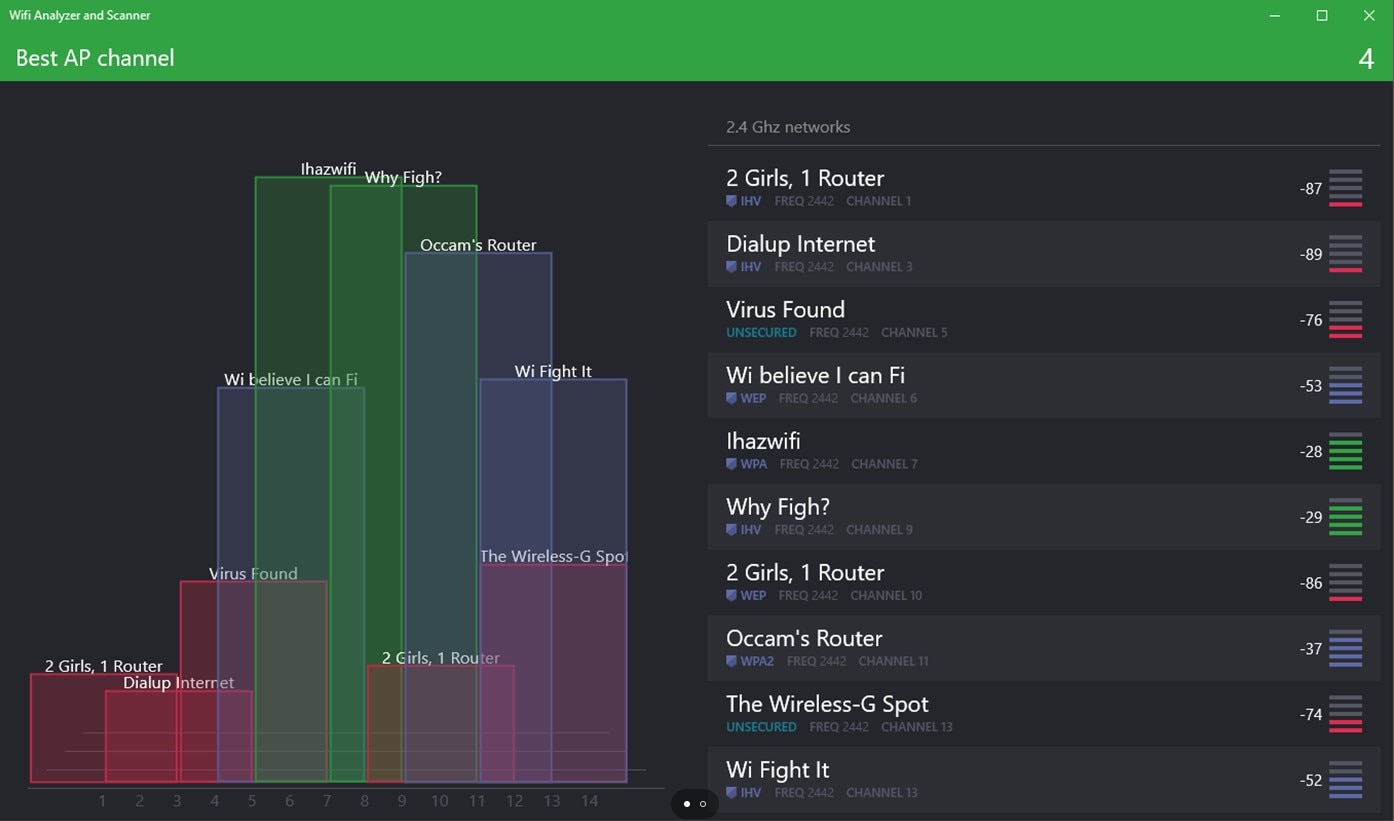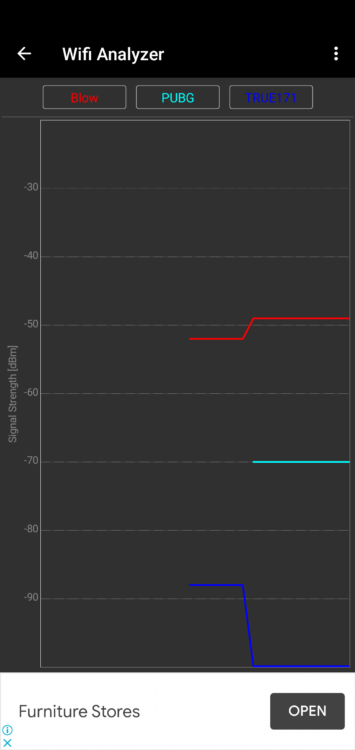
In the subsections below, we’ll look at the best WiFi analyzers, their features, types, and technical reviews. The WiFi network analyzer is used to solve these problems and optimize the network and improve security. When these channels are crowded, users get slower speeds, resulting in a slow Internet experience. This band is further divided into several channels for the transmission of data or signals. Slow WiFi or signaling has become a trend, especially in urban or densely populated areas.Īll wireless networks use the 2.4 GHz and 5 GHz bands to send and receive data. This reality has a flip side, and that is a slow WiFi connection.
:max_bytes(150000):strip_icc()/wifianalyzer-a2ab725f6e3344219ebe7d71e85228c3.jpg)
Today, no home, office, or other modern facility can function without a high-speed WiFi network. Don't miss out! Register now for Interop, May 2-6, and receive $200 off.Review the top WiFi Analyzers for Windows and Mac to select the best WiFi Monitoring Tool to optimize the network and improve security: Learn more about wireless infrastructure and supporting the mobile enterprise in the Wireless & Mobility Track at Interop Las Vegas this spring.


Check them out if you're interested in delving into a specific aspect of wireless performance, planning access point placement, seeking out rogue networks, or you just want a cool, slick interface. There are additional, lesser known free options, and we've assembled the best of them here. Known best for its Ethernet analysis capabilities, Wireshark also offers support for 802.11 and provides the means to not only troubleshoot wireless problems, but also to better lock down security configurations. Wireshark is another free tool that has a large community of users and continual improvements. But NetStumbler was last updated in 2004, making it a little long in the tooth for measuring cutting-edge wireless environments. You're probably familiar with the classic free NetStumbler utility, which can be used to detect 802.11 a/b/g WLANs and can help in configuration verification and identifying weak signals.

That's why having an arsenal of tools at your disposal to analyze and troubleshoot Wi-Fi performance, interference and placement is essential. But if you've ever managed a wireless LAN environment, you know it's just as much a matter of art as science. Wireless connectivity is growing in leaps and bounds in volume and in importance to the business.


 0 kommentar(er)
0 kommentar(er)
